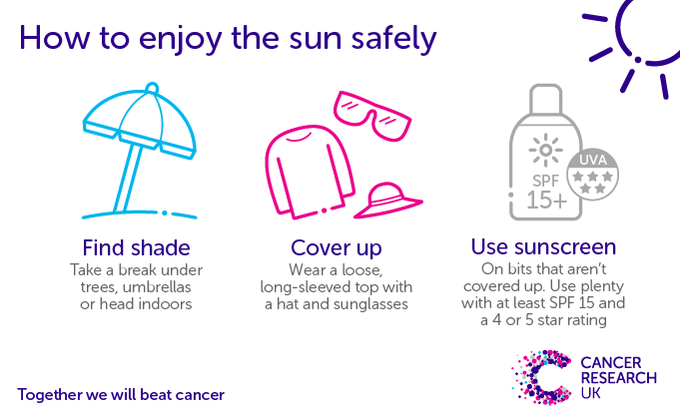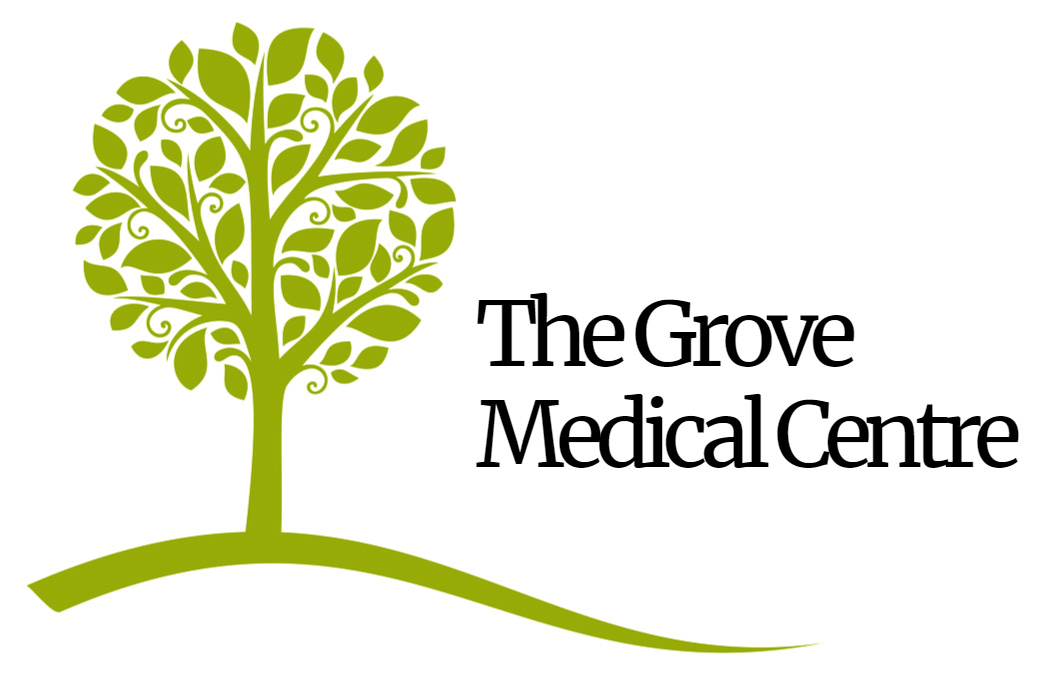Opening Times | Online Services | Contact Us |
CQC Rating Good
Skin Cancer
Most skin cancers are caused by skin damage from sun exposure over a long period of time, or from a history of getting sunburnt. The older you are, the more likely you are to develop skin cancer. But it can also develop in younger people too. The most common sign of a melanoma is the appearance of a new mole or a change in an existing mole.
Because people are living longer, they are exposed to more sun over their lifetimes. The ultraviolet light in sunlight damages the DNA in the skin cells. Sunburn doesn't just happen abroad or on summer holidays. Even on cloudy or foggy days you can still get sunburnt. Up to 80% of UV rays pass through cloud or mist, so be sure to still find shade, cover up and use sunscreen on the areas you cannot cover.
Signs and Symptoms
In most cases, melanomas have an irregular shape and are more than one colour. They are usually painless and grow slowly, but sometimes they may grow quickly. They can appear anywhere on your body. The mole may also be larger than normal and can sometimes be itchy or bleed. If you notice anything unusual on your skin, make an appointment to show it to your GP. It might help to take a photograph, so you can check for any changes. Remember there are many other skin conditions that are not cancer, especially in older people. It can be more difficult to notice changes in darker skin. This is because symptoms of skin cancer may be less obvious than in people with paler skin. If you notice any changes, such a a sore that does not heal, always see your GP.
- Check for a mole that gradually changes shape, size, or colour, or one that feels itchy or sometimes bleeds.
- A spot that has a raised area of skin, looks pink or red or feels tender to the touch.
- Areas of skin that may be smooth and pearly-white or waxy.
- A firm, red lump or one that may look sunken in the middle (pearly-brown or black if you have darker skin).
- A flat, red spot that is scaly and crusty - or a spot that develops a crust or scab.
- A pale non-healing scar, or an area of damaged skin that begins but never completely heals.

No sunscreen, no matter how hight the factor, can provide 100% protection. Sunscreen shouldn't be used to extend your time in the sun, and it doesn't make tanning safe. If you want to tan then using fake tan is a safer way to do it. UV radiation from sunbeds (tanning beds) can damage the DNA in your skin cells. Like the sun, sunbeds, sun lamps and tanning booths all give off UV radiation.
Sun Safety for Children
Sun safety is important at all ages. Protect children's skin using a combination of shade, clothing and sunscreen. Covering skin with clothing helps to reduce UV rays reaching the skin, perhaps by wearing a t-shirt in the paddling pool or a hat when at the park. Remember sunglasses and hats are a great way to protect the face and eyes too.
Children and teenagers might need a reminder or a helping hand but setting a good example yourself is a great way to help them learn good habits.
Another handy tip to help you work out when the sun is strong is to use the 'shadow rule'. It's simple and it works anywhere in the world. It's also a fun way to talk to children about enjoying the sun safely. Look at your shadow and if it is shorter than your height then this means that the sun's UV rays are strong. So that's when you are more likely to burn and need to take care and protect your skin, especially if you get sunburnt easily.
We use cookies to help provide you with the best possible online experience.
By using this site, you agree that we may store and access cookies on your device. Cookie policy.
Cookie settings.
Functional Cookies
Functional Cookies are enabled by default at all times so that we can save your preferences for cookie settings and ensure site works and delivers best experience.
3rd Party Cookies
This website uses Google Analytics to collect anonymous information such as the number of visitors to the site, and the most popular pages.
Keeping this cookie enabled helps us to improve our website.
